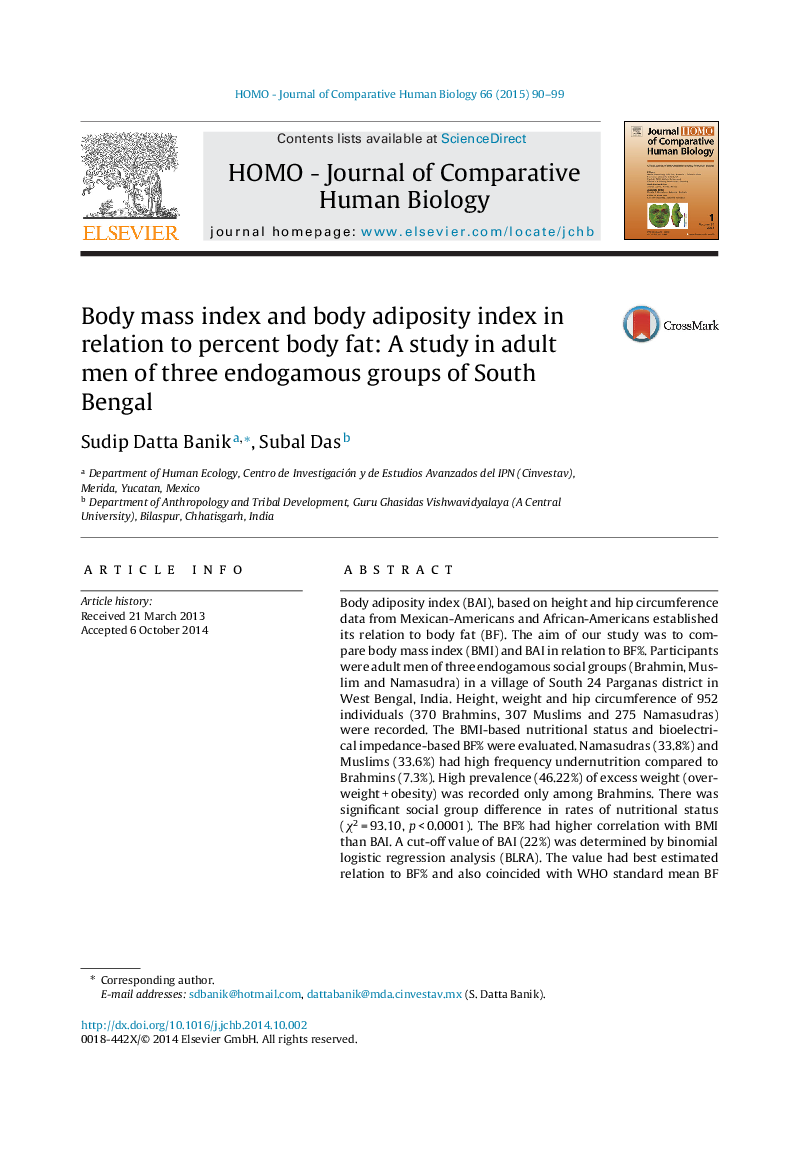| Article ID | Journal | Published Year | Pages | File Type |
|---|---|---|---|---|
| 100077 | HOMO - Journal of Comparative Human Biology | 2015 | 10 Pages |
Body adiposity index (BAI), based on height and hip circumference data from Mexican-Americans and African-Americans established its relation to body fat (BF). The aim of our study was to compare body mass index (BMI) and BAI in relation to BF%. Participants were adult men of three endogamous social groups (Brahmin, Muslim and Namasudra) in a village of South 24 Parganas district in West Bengal, India. Height, weight and hip circumference of 952 individuals (370 Brahmins, 307 Muslims and 275 Namasudras) were recorded. The BMI-based nutritional status and bioelectrical impedance-based BF% were evaluated. Namasudras (33.8%) and Muslims (33.6%) had high frequency undernutrition compared to Brahmins (7.3%). High prevalence (46.22%) of excess weight (overweight + obesity) was recorded only among Brahmins. There was significant social group difference in rates of nutritional status (χ2 = 93.10, p < 0.0001). The BF% had higher correlation with BMI than BAI. A cut-off value of BAI (22%) was determined by binomial logistic regression analysis (BLRA). The value had best estimated relation to BF% and also coincided with WHO standard mean BF (22%) for overweight adults at BMI (≥25 kg/m2). However, greater area under the receiver operating characteristic curve, higher correct prediction rate, and other results of BLRA for the cut-off value of BMI-based overweight (≥25 kg/m2) showed its better relation to BF% than that observed for BAI cut-off at 22%. The BMI was observed to be a better indicator of adiposity compared to BAI in relation with body fat (%).
